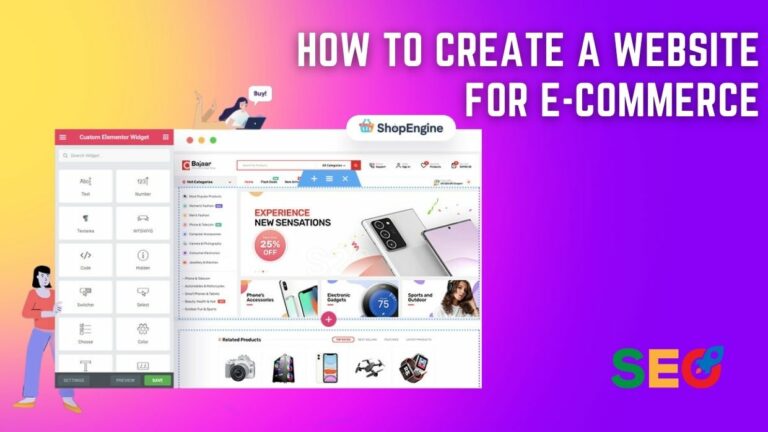How to Improve Mobile Optimization
In this blog post, we’ll explore some effective tips and tricks on “How to Improve Mobile Optimization”. Are you tired of seeing your website’s mobile traffic lag behind desktop visitors? With more and more people accessing the internet via their smartphones, it’s essential to prioritize mobile optimization. From responsive design to optimizing images and content, we’ve got you covered with everything you need to know. So let’s dive in and ensure that your website is ready for the growing number of mobile users out there!
Introduction to Mobile Optimization

It is no secret that mobile optimization is becoming increasingly important for businesses. More and more people are using their smartphones and tablets to access the internet, and if your website is not optimized for mobile devices, you could be missing out on a lot of potential customers.
Mobile optimization is about making sure your website can be easily accessed and used on a mobile device. This means making sure the website design is responsive, the pages load quickly, and the content is easy to read on a small screen.
There are a few different ways to improve mobile optimization for your website. One way is to use a responsive design. This means that your website will automatically adjust to fit any screen size, whether it’s a desktop computer, a laptop, or a smartphone. Another way to improve mobile optimization is to use AMP (Accelerated Mobile Pages).
AMP pages are designed to load quickly on mobile devices, so they’re a good option if you want to make sure your website loads quickly on all devices. Finally, you can also use separate mobile versions of your website. This means creating different versions of your website specifically for mobile devices. Separate mobile versions can be customized specifically for smaller screens and touch-screen interfaces.
Reasons for Optimizing for Mobile
As more and more people use their mobile devices to access the internet, it is increasingly important for businesses to have mobile-friendly websites. There are a number of reasons for this:
- Mobile users are more likely to be looking for quick, specific information. They want to be able to find what they’re looking for without having to search through a lot of irrelevant content.
- Mobile devices have smaller screens, so it’s important to make sure that your website is designed in a way that makes the most use of the available space. This means using larger font sizes and employing a minimalist design.
- People are often using their mobile devices while on the go, so it’s important to make sure that your website loads quickly and is easy to navigate.
- Finally, since mobile users are more likely to be searching for local businesses, it’s important to make sure that your website is optimized for local search engines.
Benefits of Mobile Optimization
There are many benefits of mobile optimization, including improved search engine rankings, increased website traffic, and higher conversion rates.
Mobile optimization is also beneficial for user experience, as it can make your website more user-friendly on smaller screens. In addition, mobile optimization can help you reach a wider audience, as more and more people are using mobile devices to access the internet.
How to Improve Mobile Load Times
- Make sure your website is using responsive design
- Minimize HTTP requests
- Use a content delivery network (CDN)
- Optimize images for the web
- Minify CSS, JavaScript, and HTML code
- Use browser caching
- Enable compression
- Reduce redirects and broken links
- Utilize lazy loading for images, videos, and other media
- Prioritize above-the-fold content
Tips for Designing a Responsive Website
When it comes to responsive web design, there are a few key things you’ll want to keep in mind in order to ensure your website looks great and functions well across all devices.
Here are some tips for designing a responsive website:
- Use a responsive framework: A responsive framework will help make your life much easier when it comes to creating a responsive website. This is because a responsive framework will already have CSS media queries built in, which will save you time and effort having to write them yourself.
- Optimize your images: When it comes to images, you’ll want to make sure that they are optimized for the web. This means using an appropriate file format (such as JPEG or PNG), compressing your images, and using image sprites where possible.
- Use CSS media queries: CSS media queries are one of the most important tools at your disposal when creating a responsive website. By using media queries, you can target specific styles to different screen sizes, which is essential for making your website look great on all devices.
- Minimize HTTP requests: Each time a user visits your website, their browser has to send an HTTP request to the server in order to retrieve the necessary files. This process can take a while, especially if there are a lot of files that need to be downloaded. To minimize HTTP requests, you can use techniques such as caching, sprite sheets, and inline images.
- Test your website: Once you’ve finished building your website, it’s important to test it and make sure it works properly across all devices. This can be done manually or with the help of a testing tool such as BrowserStack.
By following these tips, you should be able to create a website that looks great and functions well no matter what device your users are using.
SEO Strategies to Increase Traffic from Mobile Devices
Smartphone users now account for over 60% of all web traffic, so it’s no surprise that businesses are focused on SEO strategies to increase traffic from mobile devices.
Here are a few tips to improve your mobile optimization:
- Use responsive design. This ensures that your website will adapt to any device, whether it’s a phone, tablet, or computer.
- Use short, concise content. Mobile users are often looking for quick answers, so make sure your content is easy to read and digest.
- Include calls to action. Make it easy for mobile users to take the next step with clear CTAs that lead them to the desired conversion goal.
- Optimize images. Slow loading times can be a major issue on mobile devices, so make sure your images are properly sized and compressed.
- Improve page speed. In addition to optimizing images, there are a number of other ways to improve page speed on mobile devices.
- Use AMP pages. Accelerated Mobile Pages (AMP) are pages that have been simplified and optimized for fast loading on mobile devices. Google has been giving preference to AMP pages in its search results, so this is a great way to get more exposure to your content.
By following these tips, you can ensure that your website is optimized for mobile users and can capitalize on the growing trend of mobile web traffic.
Read more… What are The Common E-commerce Mistakes
Case Studies of Companies That Improved Their Mobile Experience
- Company A saw a significant increase in mobile traffic after redesigning its website to be more responsive.
- Company B increased its conversion rate by 30% after making its checkout process easier on mobile devices.
- Company C saw a 75% reduction in abandoned shopping carts after optimizing their mobile site for speed and usability.
- Company D more than doubled its mobile traffic after implementing a mobile-first design approach.
- Company E saw a 20% increase in organic search traffic after improving the mobile experience of their website.
Conclusion
In conclusion, improving mobile optimization is critical to ensure your website performs well and can be accessed by users from any device. By following these tips, you will have a better understanding of how to optimize for mobile viewing and make sure that your site looks great no matter what device it’s viewed on. With the increasing use of mobile devices in today’s world, optimizing for them has never been more important. Take the time to review your website and ensure that it delivers an optimal experience for those who visit via their smartphones or tablets.







